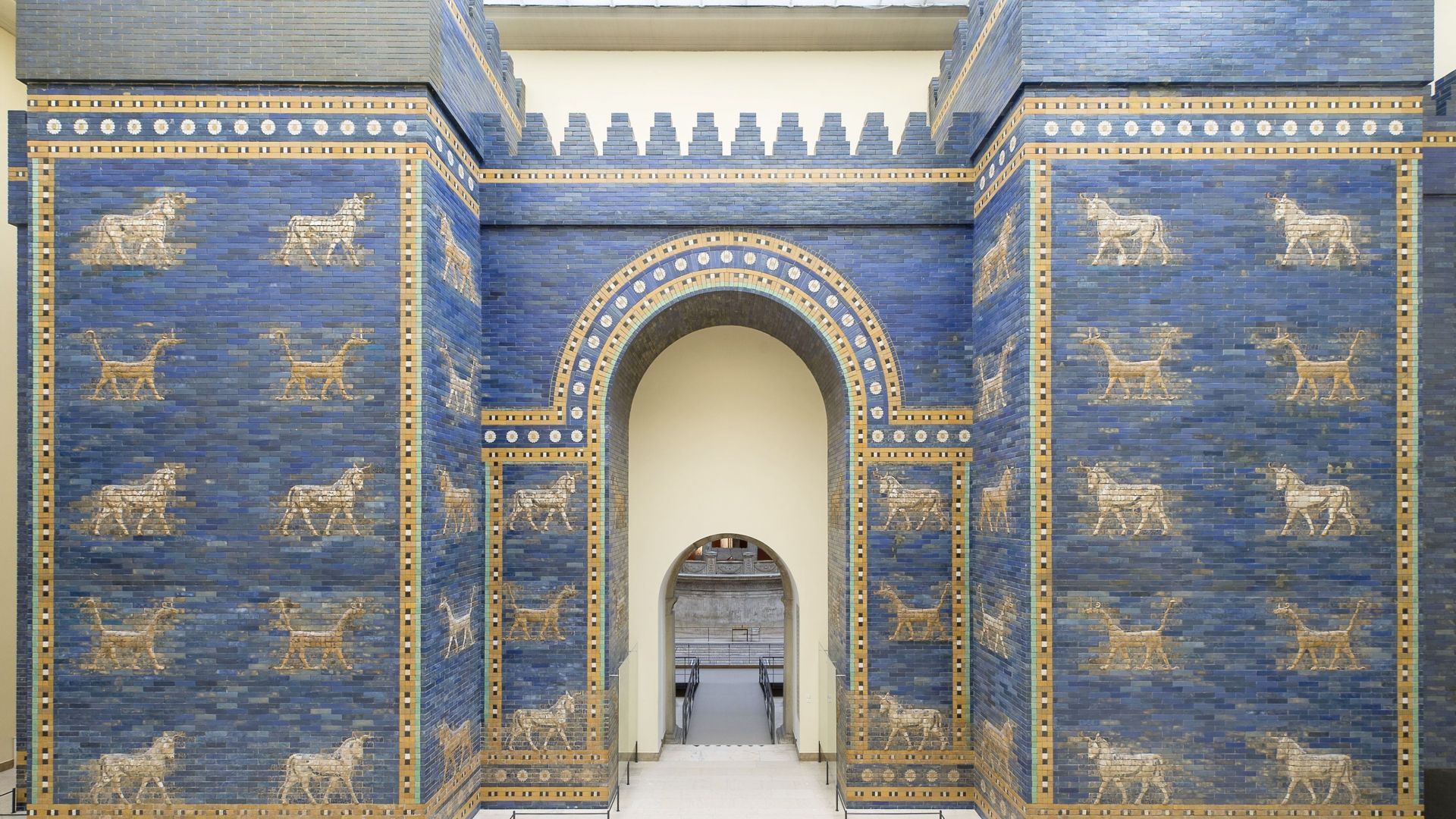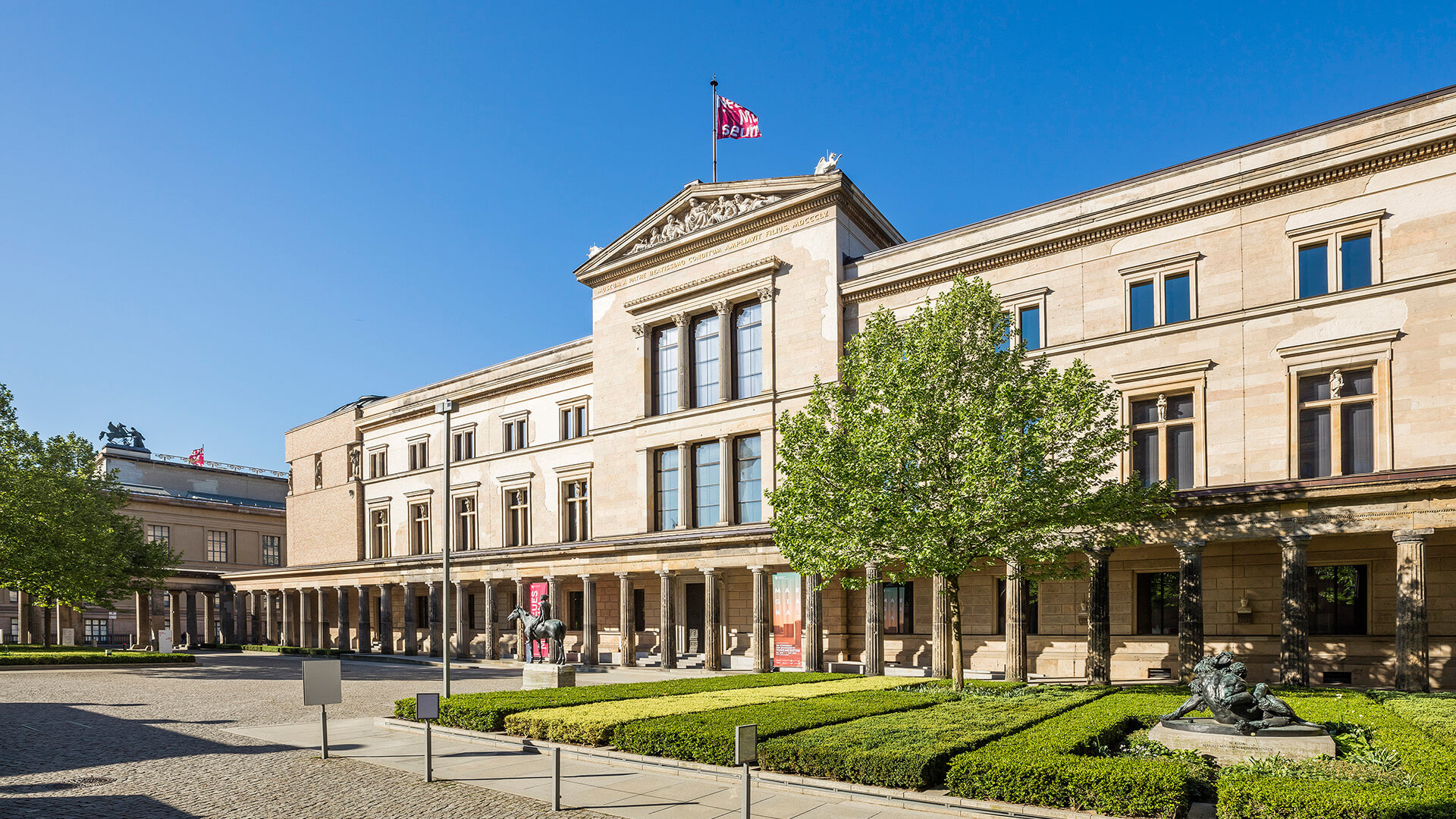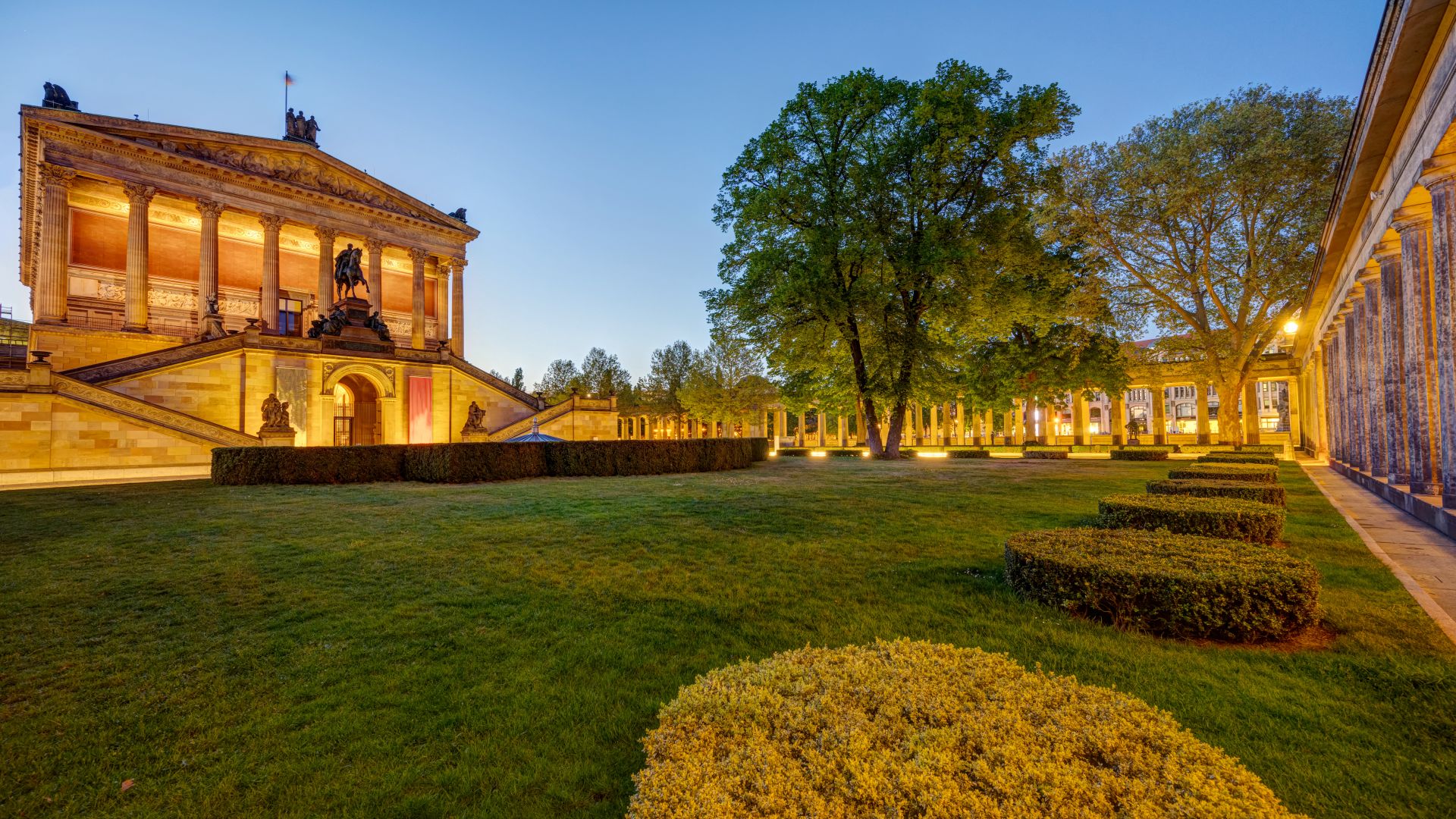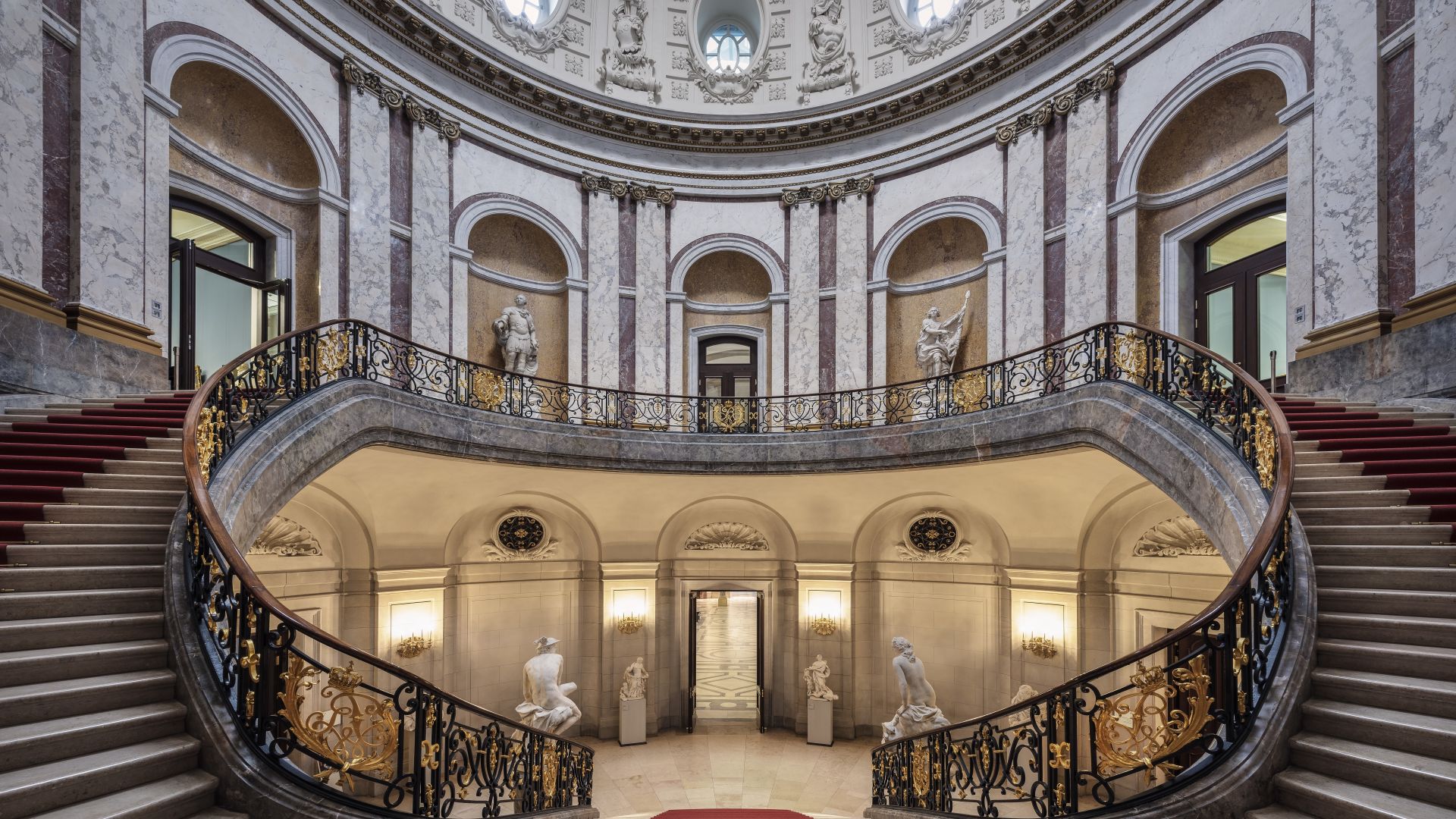Cities & Culture
Berlin Museum Island: Concentrated Culture
The ensemble of five museums, which is a UNESCO World Heritage Site, can be described without exaggeration as one of the highlights of European cultural tourism – for example, the Bust of Nefertiti and the Pergamon Altar. Significantly, within the framework of a massive master plan, the venerable buildings are being renovated step by step – and expanded.
Pergamon Museum: great works of art, spanning 6,000 years of history
 Berlin: Ishtar Gate in the Pergamon Museum
©Staatliche Museen zu Berlin - Vorderasiatisches Museum, Foto (Olaf M. Teßmer)
Berlin: Ishtar Gate in the Pergamon Museum
©Staatliche Museen zu Berlin - Vorderasiatisches Museum, Foto (Olaf M. Teßmer)
Every year, well over two million visitors flock to the Museum Island. Constructed in 1930 in neoclassical style, the Pergamon Museum is not only by far the largest museum, but also, together with the Neues Museum, the greatest magnet for visitors. No wonder, since it is considered one of the most important museums in the history of human culture, with sculptures and works of art up to 6,000 years old. Strictly speaking, these are three separate collections. One of them is the Collection of Classical Antiquities, and its stellar exhibit is the 113-metre-long sculptural frieze of the 2,200-year-old Pergamon Altar. Until this masterpiece of Hellenistic art can one again be viewed in person, a 360-degree panorama by Yadegar Asisis in the temporary "Panorama" exhibition on the opposite side compensates – its section of the museum will be closed until 2023 in the course of the general renovation, which will also include the addition of a fourth wing to the building. Other internationally famous exhibits, however, can be experienced in person, such as the Lion Relief in the Processional Way and the huge Ishtar Gate in the Vorderasiatischen Museum (Museum of the Ancient Near East). Monumental exhibits include the Market Gate of Miletus with over 1,000 tonnes of marble and 17-metre-high columns, as well as the Mshatta Façade. In addition, the Museum of Islamic Art, one of the oldest and most extensive collections of Islamic art and exhibits in Germany, displays Qurans, prayer benches, carpets and craftwork.
Old and New Museum: Nefertiti, Schinkel and Caesar
 Berlin: Kolonnadenhof and Neues Museum on Museum Island
©Staatliche Museen zu Berlin (David von Becker)
Berlin: Kolonnadenhof and Neues Museum on Museum Island
©Staatliche Museen zu Berlin (David von Becker)
The bust of Nefertiti is considered the most famous female sculpture in the world and is a timeless icon of beauty. This impressively sculpted figure, one of the most famous art treasures of Ancient Egypt, is by far the most popular exhibit in the Neues Museum (New Museum), which reopened in 2009. This in turn consists of two collections, the Egyptian Museum with its papyrus collection, the highlights of which include the Amarna collection (including The Bust of Nefertiti), the "Green Head" and three newly restored sacrificial chambers from the Old Kingdom, and the Museum of Prehistory and Early History. Fun fact: the oldest of around 6,000 objects on display is a 700,000-year-old hand axe from the Palaeolithic Age, and the most recent is a piece of barbed wire from the Berlin Wall. Schliemann's famous collection of Trojan antiquities is also very popular. Even more ancient treasures are housed in the Altes Museum (Old Museum) opposite, built by Karl Friedrich Schinkel, which is a masterpiece of classical architecture, especially considering its pantheon-like rotunda. Once inside, vases, sculptures and relics from ancient Greece, Etruscan Italy and the Roman Empire, including portraits of Caesar and Cleopatra and the statue of the goddess of Taranto, will delight visitors.
Alte Nationalgalerie (Old National Gallery): The Best of the 19th Century
 Berlin: Old National Gallery with the equestrian statue of Frederick William IV during dusk
©Adobe Stock (elxeneize)
Berlin: Old National Gallery with the equestrian statue of Frederick William IV during dusk
©Adobe Stock (elxeneize)
In 2001, the reopening of the Alte Nationalgalerie (Old National Gallery), one of the most important museum buildings of the 19th century, marked the beginning of the decades-long renewal of the Museum Island, setting the standard for architecture, monument preservation and concept. Since then, the building, which resembles an ancient temple on a high plinth, has been given a new lease of life – and the same applies to the likewise newly-designed colonnaded courtyard in front of it and the treasures inside. Even though the entire collection is several times more extensive, there are approximately 400 paintings and 100 sculptures on display on the three exhibition floors. And what a collection it is! Works by Adolph Menzel, Sabine Lepsius, Franz von Stuck, Claude Monet, Auguste Renoir and other masters make the Alte Nationalgalerie one of the most important German art collections of the 19th century. Caspar David Friedrich's "The Monk by the Sea", Auguste Rodin's "The Thinker" or Édouard Manet's "In the Winter Garden" resonate even with those less familiar with art. Anyone getting into gear and wondering how to get to the Neue Nationalgalerie (New National Gallery) should take note: the exhibition venue, which focuses on 20th-century visual art, is not located on Museum Island, but eight bus stops further on, near Potsdamer Platz.
Bode Museum: Sculptural Treasures under Neo-Baroque Domes
 UNESCO Museumsinsel - Berlin - Bode Museum
©Lookphotos (Günther Bayerl)
UNESCO Museumsinsel - Berlin - Bode Museum
©Lookphotos (Günther Bayerl)
This picturesque museum, named after the art historian Wilhelm von Bode, stands at the northern tip of the island, where the Spree and Spree Canal meet. The neo-baroque architecture is no less impressive. And then within, the artistic treasures: works of art from more than 15 centuries and across a variety of disciplines. The exhibition centre houses over 100 works from the Gemäldegalerie (Picture Gallery), the Museum of Byzantine Art and a large part of the coin collection. The sculpture collection is most renowned here, one of the most extensive and oldest in the world. Art connoisseurs may be overcome when they see the Pazzi Madonna relief, Bernini's "Satyr with Panther" or the mosaic icon of Christ the Merciful. But you don't have to be a connoisseur to be impressed by the museum, renovated in 2006. The aura alone of the Great Dome Hall, with its equestrian statue of the Great Elector, is captivating and can be seen from the elevated café. Similarly enchanting is the atmosphere in the Small Dome Hall, with its statues of the Prussian generals. The highlights that await you here include an overview of the nearby premises of the James Simon Gallery, due to open in 2019. The cube-like modern building designed by David Chipperfield will not only display collections from the Ethnological Museum and the Museum of Asian Art, but will also function as a kind of visitor centre for all the facilities on the Museum Island – including access to the "Archaeological Promenade", which will connect all the museums in the future. The Bode Museum included.